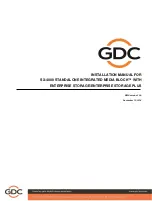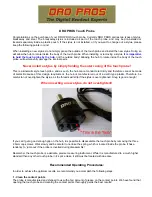
120
TK 61555-2-MM-EN
N
No
otte
ess::
1. Chemicals to aid in cleaning WILL VOID WARRANTY and are NOT RECOMMENDED.
2. In some instances, it may take a combination of two methods to result in a clean coil.
Such as, first wiping the coil to clean the surface and then using a vacuum, water or
compressed air to clean down in the fins. This will depend on the type of debris that
needs to be cleaned from the coil.
3. Do not contact the coil with any hard vacuum nozzle, air nozzle, or any other tool. This
will damage the tubes of the coil.
4. The use of cleaning agents or detergents is strongly discouraged due to the possibility
of degradation of the construction. If using a power washer, the nozzle pressure
should not exceed 600 psi (41 bar). For the best results, spray the coil perpendicular to
the face of the coil. The spray nozzle should be kept between 1 inch and 3 inches (25 to
75 millimetres) from the coil surface.
5. If necessary to use a chemical cleaner or detergent use a cleaner that does not contain
any hydrofluoric acids and is between 7 and 8 on the pH scale. Ensure dilution
instructions provided by the detergent supplier are followed. In case of doubt about
the compatibility of the detergent with the type of materials listed above, always ask
the supplier a written confirmation of the compatibility. Should a chemical cleaner be
required, it is MANDATORY that all components are thoroughly rinsed with water
even if the instructions of the cleaner specify that it is a “no rinse” cleaner.
N
NO
OT
TIIC
CE
E
E
Eq
qu
uiip
pm
me
en
ntt D
Da
am
ma
ag
ge
e!!
F
Fa
aiillu
urre
e tto
o cco
om
mp
plly
y w
wiitth
h a
ab
bo
ov
ve
e m
me
en
nttiio
on
ne
ed
d g
gu
uiid
de
elliin
ne
ess w
wiillll lle
ea
ad
d tto
o a
a ssh
ho
orrtte
en
ne
ed
d lliiffe
e o
off
tth
he
e e
eq
qu
uiip
pm
me
en
ntt tto
o a
an
n iin
nd
de
ette
errm
miin
na
ab
blle
e d
de
eg
grre
ee
e..
6. The repeated transportation of meat and fish waste can cause extensive corrosion to
the evaporator coils and evaporator section tubing over time due to ammonia
formation and can reduce the lifespan of the coils. Appropriate additional measures
should be taken to protect the coils against the aggressive corrosion that can result
from transportation of such products.
Figure 97.
Coil Before Cleaning
















































